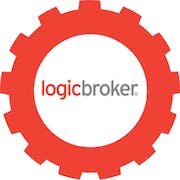Looking for the best electronic data interchange (EDI) software? Our comprehensive buyer's guide helps you to select a suitable EDI solution to streamline your business operations. Find the perfect software for your business requirements today.
Speed, accuracy, and efficiency are paramount. The traditional methods of exchanging business documents, such as paper-based transactions, have become slow, cumbersome, and expensive. Enter electronic data interchange (EDI) software which is a solution that helps companies of all sizes to exchange business documents seamlessly, with minimal human interaction. According to IBM, Saint-Gobain saved 92% per line order and can now receive documents 24 hours a day, every day of the week by using EDI over manual processes. The technology automates business processes, reduces costs, and streamlines data integration between trading partners. However, choosing the right one for your business can be a daunting task. With a plethora of options to choose from, navigating this complex world can be overwhelming. In this buyer's guide, we'll help you understand the benefits of EDI technology, what to look for when choosing the right one, and provide insights on how this tool can help take your business to the next level.
What is electronic data interchange (EDI) software?
This is a type of computer program that facilitates the exchange of business data among different organizations. The software supports the transmission of electronic documents and enables businesses to communicate and exchange data with one another, without the need for any human intervention.
EDI software is primarily used to streamline and automate the exchange of information between organizations, ensuring efficient and effective communication. Here are some of its common use cases:
- Order processing and tracking: It allows businesses to automate the process of ordering and monitoring the status of orders.
- Inventory management: An EDI tool can help businesses to manage their inventory levels, track product shipments, and monitor delivery schedules.
- Shipping and logistics: An electronic data interchange solution can assist with automating the shipping and logistics process, including tracking the movement of goods, managing logistics providers, and monitoring transport schedules.
- Invoicing and billing: It helps businesses to streamline their invoicing and billing processes, by automating the generation and transmission of invoices and payments.
- Supply chain management: This system is used extensively by businesses to manage and monitor their supply chains, including monitoring the performance of suppliers, forecasting market trends, and optimizing inventory levels.
EDI technology is particularly useful for companies that engage in frequent transactions with multiple partners or suppliers. This includes companies in manufacturing, retail, healthcare, finance, and logistics industries. EDI is quite popular in the supply chain industry, with somewhere between 59-85% of companies adopting the technology.It enables these businesses to process large volumes of transactions quickly, accurately, and securely, resulting in significant cost savings and improved efficiency.
What are the benefits of investing in an electronic data interchange tool?
The world of EDI software presents various advantages for business users. Some of the main ones include:
- Increased efficiency: With EDI technology, there’s no need to manually handle paper-based transactions, reducing human errors and manual data entry, which saves time and speeds up the processing of orders and invoices significantly.
- Enhanced accuracy: An EDI platform provides data validation, reducing error rates and data discrepancies and eliminating the need for manual communication (e.g., phone, email) to correct issues.
- Reduced costs: By replacing paper-based transactions with electronic ones, businesses save on printing, paper, postage, and storage expenses.
- Improved supply chain management: It provides real-time data exchange, which enables businesses to track their supply chain, monitor inventory levels and keep track of order fulfillment as goods move through the supply chain.
- Increased data security: With this program, trading partners' private information remains secure thanks to encrypted data transmission, which minimizes the risk of fraud or unauthorized access.
10 key features of electronic data interchange software
EDI software applications have revolutionized the way that companies communicate by providing a standardized methodology for exchanging data electronically. Common features include:
1. Painless onboarding: It enables companies to onboard their partners and customers smoothly and efficiently. With built-in templates and automation tools, EDI reduces the time and effort required for data exchange setup.
2. Speed and accuracy: With EDI, manual errors are things of the past. Electronic data exchange ensures faster and more accurate data transfer, improving productivity and reducing the risk of errors.
3. Multiple file formats: EDI technology can handle various file formats from standard formats to complex ones like EDIFACT, X12, and XML, making it easy for businesses to work with different partners and customers, regardless of their preferred format.
4. Customization: This electronic tool allows companies to customize messages and documents to meet their specific needs and those of their business partners.
5. Data security: It offers secure and encrypted transmission of data, ensuring that sensitive information remains protected.
6. Scalability: It can also handle a high volume of data and can scale to match your business growth.
7. Automated workflow: Businesses can automate their workflows, reducing manual processes and freeing up staff resources to focus on more pressing tasks making use of this application.
8. Real-time tracking: With an EDI app, businesses can track data exchange in real-time, enabling them to monitor progress, resolve issues promptly, and streamline their processes.
9. Integration: An electronic data interchange platform can integrate with other business systems, like ERP, ecommerce platforms, and CRM, improving data flow and accuracy across the enterprise.
10. Cost-effective: By reducing manual data entry, errors, and paperwork, EDI software saves businesses time, money, and resources.
With an array of features that support customization, scalability, and data security, EDI technology is a must-have tool for companies that need fast and efficient data exchange while maintaining data integrity.
Key considerations when adopting an electronic data interchange system
Before purchasing an EDI system it's crucial to consider some essential factors to ensure that the investment aligns with your business needs.
Firstly, you must consider the EDI solution's data transaction volume capability because this determines how much data the system can handle at any time. You must also ensure that the one you choose can accommodate the type of business documents you want to exchange, such as orders, invoices, or dispatch alerts.
Secondly, you must consider the cost of the program. The initial investment can be relatively high, and deployment times can be lengthy, so you want to ensure you're investing in software that delivers a strong ROI.
Thirdly, consider the platform's scalability. Your business needs may evolve over time, so your EDI solution must be able to grow alongside your business. You'll also want to investigate its flexibility in adapting to new connection protocols, seamless integrations with new systems, and the addition of new trading partners.
Lastly, it's crucial to consider the provider's reputation, reliability, and customer support levels before investing in any EDI software. Make sure the provider has expertise in your industry and can provide excellent customer support to ensure minimal downtime and maximum return on investment.
Market trends for electronic data interchange software
As we head further in 2024 and beyond, the following trends are expected to change the landscape of data exchange.
1. Increased adoption of cloud-based solutions: Cloud-based EDI software has been gaining traction as it eliminates the need for on-site IT infrastructure and reduces costs. Businesses are expected to embrace cloud-based EDI solutions to improve collaboration, streamline communication, and enhance supply chain transparency.
2. Integration with AI and machine learning: With the growth of artificial intelligence and machine learning, companies are looking for ways to integrate these innovations with their EDI processes. The integration of AI and machine learning will help enhance data analysis and improve decision-making processes.
3. Focus on cybersecurity: Cybersecurity is becoming one of the top concerns for businesses adopting EDI solutions. To mitigate the risk of cyber threats and data breaches, companies are expected to invest in secure EDI packages to protect their data and maintain compliance.
4. Scalability: Scalability is another trend that EDI providers are focusing on. With businesses constantly evolving, EDI technology must be scalable to adapt to businesses of all sizes.
5. Blockchain integration: The integration of blockchain technology with EDI systems is becoming popular. The aim is to create a more secure and tamper-proof data exchange system that enhances transparency.
Conclusion
By automating the exchange of information between stakeholders, EDI technology enables businesses to enhance their operational performance, improve their supply chain efficiency, and reduce their costs while increasing productivity. By considering these essential factors, you can ensure you're investing in an EDI software solution that meets your business needs efficiently. Providers of this app will have to keep up with these trends and continue to innovate to stay competitive. As technology continues to evolve, businesses will have to embrace new solutions to remain competitive and efficient.









